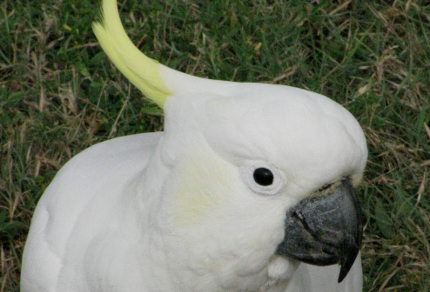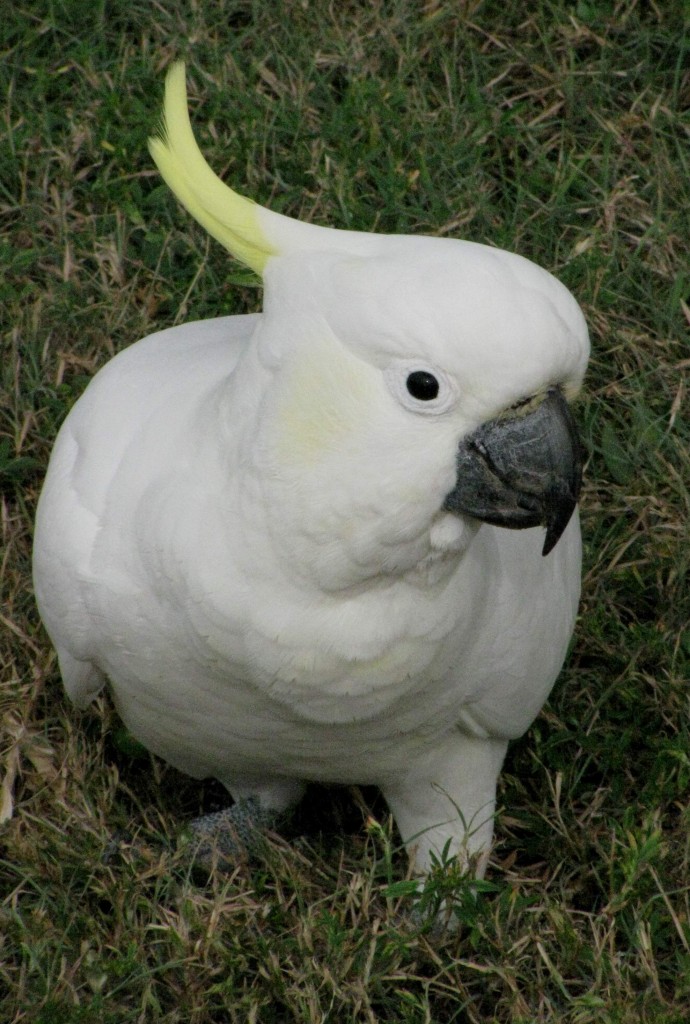
Sulphur-crested Cockatoo (© Magi Nams)
It seemed a gentle afternoon, the sweet cries of a toddler in a playground blending with the serenity of the Ross River lying still and placid beneath its lily pads and edgings of water hyacinth. Cloud rested like a comforting blanket over Townsville, and rich, wet air from the river swept over me as I cycled to Pioneer Park. All day, I had detected wafts of the licorice fragrance of anise in the air, and more of that rich scent flooded into my lungs as I rode. I wondered if it was produced by flowering ornamental trees, some of which bore brilliant hot pink blossoms that flamed above Townsvillian yards.
Near the Nathan Street bridge – more properly called the Charles Barton Bridge – a dozen sulphur-crested cockatoos plucked grasses from the drying lawn adjacent to the path. Their cheeks bore a faint lemon blush that echoed the colour of their crests, and I knew from watching white cockies fly overhead, that their underwing and undertail feather coverts were pigmented with that same lemon or sulphur blush. The cockies fed peacefully, muttering only occasional grunts, not jolting the air and nerves with their shattering screams, many of which I’ve heard during our time in Australia.
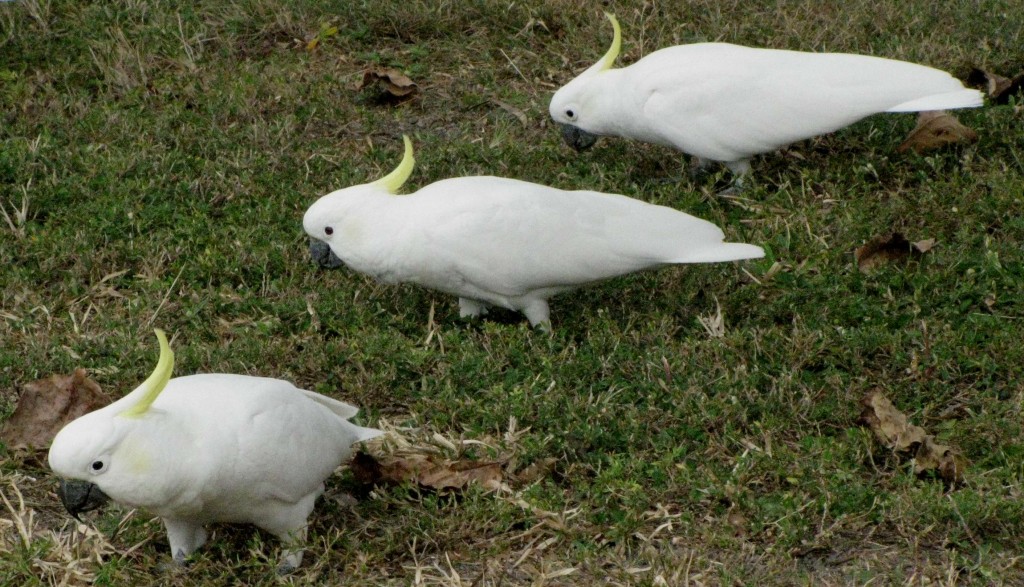
Sulphur-crested Cockatoos Foraging in Lawn Grass (© Magi Nams)
In comparison with the slim, agile rainbow lorikeets I photographed last weekend (see http://maginams.ca//2010/05/15/), the chunky cockatoos with their short, sturdy legs appeared slow and slightly clumsy, particularly when a few flapped up into a nearby tree and clambered about on its branches, tugging off leaves and tossing them to the ground. On landing in the tree, or on the ground, the cockies spread their mobile crests, revealing a half dozen upswept, curving spikes of richly yellow feathers. Sulphur-crested cockatoos are widespread over northern, eastern, and southeastern Australia, including Tasmania, and also occur in southwest Western Australia, where they were introduced.1 I’ve observed them in the wet tropics rainforests on the Atherton Tablelands, the open savannah woodland surrounding Townsville, the giant swamp gum forests of the Styx Valley in Tasmania, as well as in the cities of Townsville and Melbourne.

Pacific Black Duck (© Magi Nams)
Cycling on, I passed a trio of agile wallabies feeding in the same mowed meadow in Cranbrook where I’d watched a mob of wallabies feeding and resting a week ago. The riverside path, which metamorphoses from the Ross River Parkway into Riverway when it reaches Thuringowa, led me on past Gleeson’s Weir and Black Weir. The air was filled with the calls of rainbow lorikeets, white-gaped honeyeaters, magpie-larks, masked lapwings, and mynas, and I spotted black ducks cruising on the river, a little egret hunting at its edge, and blue-faced honeyeaters swooping into riverside trees.
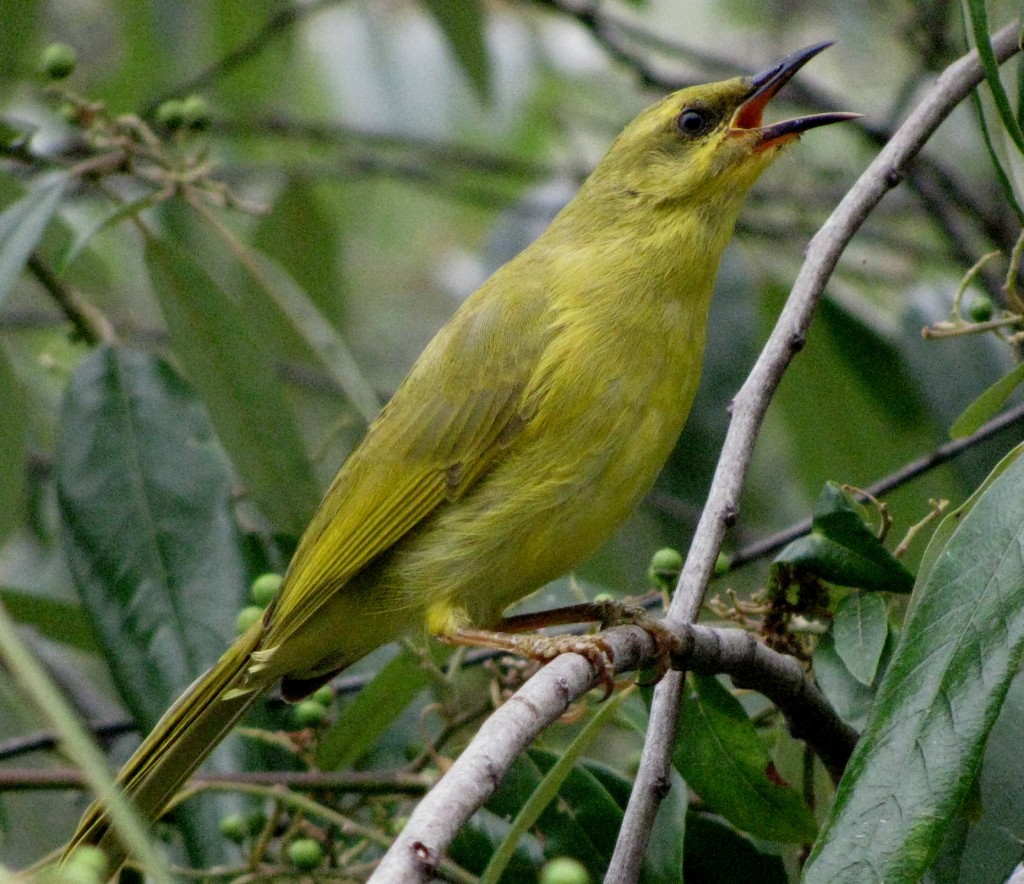
Yellow Honeyeater (© Magi Nams)
Welcome swallows flashed over the river in Pioneer Park, and yellow honeyeaters in a riverside shrub scolded me with rattling outbursts. I startled a pied cormorant into flight and watched screeching magpie-larks harrass a slim-tailed raptor silhouetted against the sky. While I stood near the scolding honeyeaters, a female leaden flycatcher – all shades of blue-grey, warm cinnamon, and white – flew into the shrub, attracted by the commotion. She eyed me pertly from an exposed branch and, not for the first time, I wondered how much of birdwatching is peoplewatching, too.
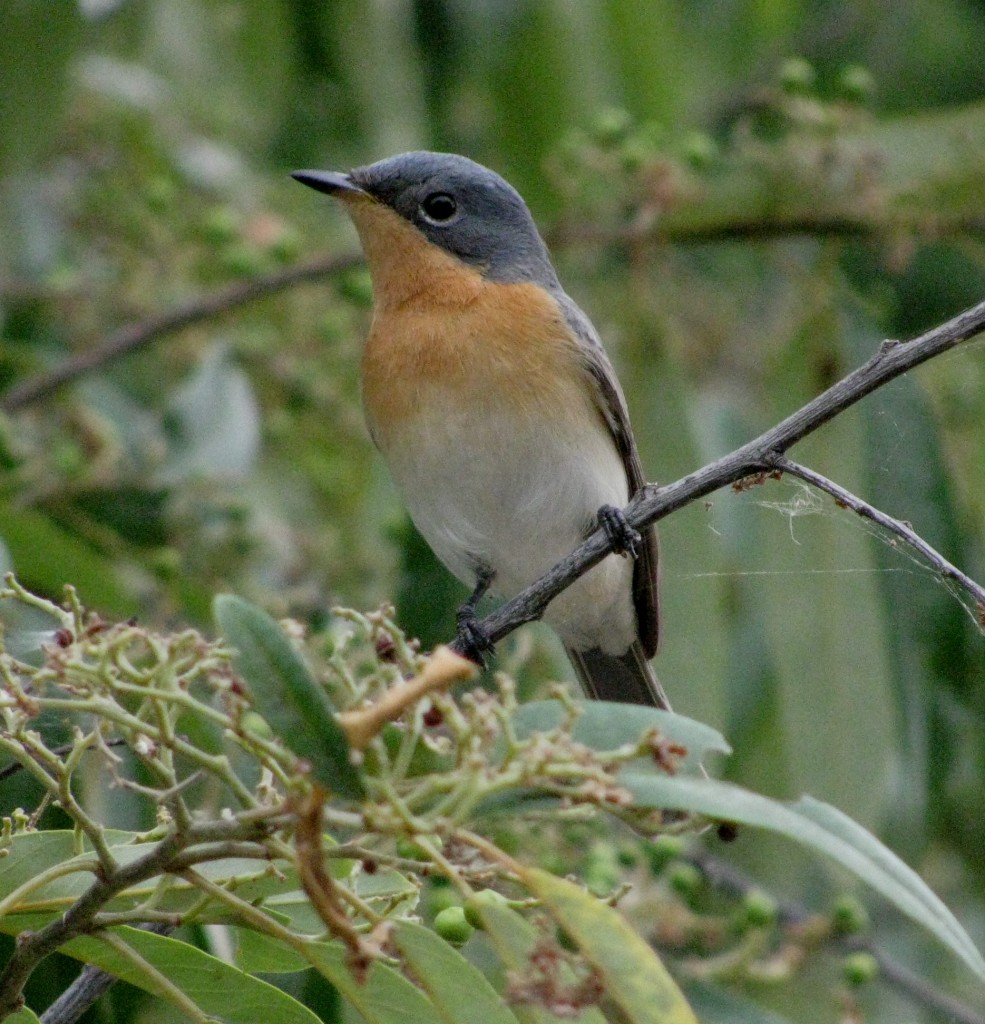
Female Leaden Flycatcher (© Magi Nams)
Reference:
1. Graham Pizzy and Frank Knight. The Field Guide to the Birds of Australia. 2000. Angus & Robertson, Sydney. pp. 264-265.

